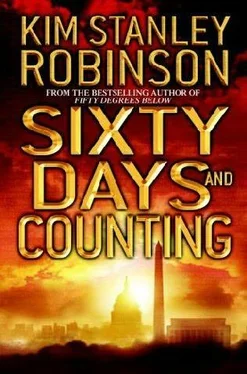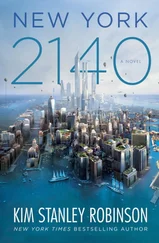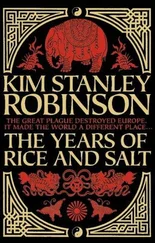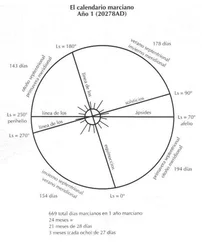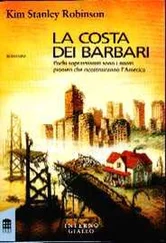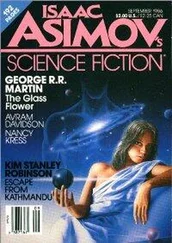All this distracted her as she worked over the data in her biostatistical studies, but it also caused her to continue to think about the situation. She had chosen to stay at NSF because she felt she could do more there, and that NSF still had a crucial part to play in the larger effort. It was a small agency but it was central, in that it coordinated basic scientific research—really the heart of all their solutions. So she continued to do her work there, organizing the grant evaluation process and running the division. And when she could she kept working on the FCCSET program she had discovered, which Diane was going to try to get OMB to get Chase to reinstate—that kind of coordination of all the federal departments and agencies into overarching project architectures was a development with huge potential. But there had to be other things she could do too. She talked to Alyssa and the others in her office about it, she talked to Diane and Edgardo, she talked to Drepung, and then to Sucandra.
Sucandra she found particularly interesting. He was the one who had been her Cognizant Program Manager, so to speak, at the Khembalung Institute for Higher Studies, and he had been the single most disconcerting person she had ever talked to about the underlying purposes of science, being a doctor himself (but of Tibetan medicine) as well as a kind of Buddhist teacher, or even mentor to her, if there could be such a thing—as well as her Tibetan tutor, which she liked the best as being the most straightforward of their interactions. But in that context she mentioned to him once her attempt to balance her scientific work with something larger, amorphous though it might be.
He said to her: “Look to China.”
IV. THE TECHNOLOGICAL SUBLIME

T he formalized “shortage economics” Anna had found had been pioneered by one Janos Kornai, a Hungarian economist who had lived through the socialist era in Soviet-controlled Eastern Europe. His work focused on the period 1945 to 1989, when most of his data had been generated. Anna found certain parallels to their current situation interesting, particularly those having to do with the hoarding response.
One day when she was visiting with Frank and Edgardo after a task force meeting in the Old Executive Offices, she showed some of what she had found to them. Edgardo happily pored over the relevant pages of the book she had brought along, chuckling at the graphs and charts. “Wait, I want to Xerox this page.” He was the happiest broadcaster of bad news imaginable, and indeed had recently confessed that he was the one who had started the tradition of taping especially bad news to the walls of the copy room called the Department of Unfortunate Statistics over at NSF—a revelation that was no surprise to his two friends.
“See?” Anna said, pointing to the top of the diagram he was looking at now. “It’s a decision tree, designed to map what a consumer does when faced with shortages.”
“A shopping algorithm,” Frank said with a short laugh.
“And have we made these choices?” Edgardo asked.
“You tell me. Shortages start because of excess demand—a disequilibrium which leads to a seller’s market, which creates what Kornai calls suction.”
“As in, this situation sucks,” Edgardo said.
“Yes. So the shelves empty, because people buy when they can. Then the queuing starts. It can be either a physical line in a store, or a waiting list. So for any given item for sale, there are three possibilities. It’s either available immediately, or available after a queue, or not available. That’s the first split in the tree. If it isn’t available at all, then the next choice comes. The shopper either makes a forced substitution, like apples for artichokes, or else searches harder for the original item, or else postpones the purchase until the item is available, which Kornai also calls ‘forced saving’—or else abandons the purchasing intent entirely.”
“I like this term ‘investment tension,’” Edgardo said, reading ahead on the page. “When there aren’t enough machines to make what people want. But that’s surely not what we have now.”
“Are you sure?” Frank said, paging through the paper. “What if there’s a shortage of energy?”
“It should work the same,” Anna said. “So see, in a ‘shortage economy’ you get shortages that are general, frequent, intensive, or chronic. The classical socialist systems had all these. Although Kornai points out that in capitalism you have chronic shortages in health care and urban housing. And now we have intensive shortages too, during the blackouts. No matter what the product or service is, you get consumers who have a ‘notional demand,’ which is what they would buy if they could, and then ‘completely adjusted demand,’ which is what they really intend to buy knowing all the constraints, using what he calls ‘expectation theory.’ Between those you have ‘partially adjusted demand,’ where the consumer is in ignorance of what’s possible, or in denial about the situation, and still not completely adjusted. So the move from notional demand to completely adjusted demand is marked by failure, frustration, dire rumors, forced choices, and so on down his list. Finally the adjustment is complete, and the buyer has abandoned certain intentions, and might even forget them if asked. Kornai compares that moment to workers in capitalism who stop looking for work, and so aren’t counted as unemployed.”
“I know some of those,” Frank said. He read aloud, “ ‘A curious state of equilibrium can arise,’” and laughed. “So you just give up on your desires! It’s almost Buddhist.”
“I don’t know.” Anna frowned. “ ‘Forced adjustment equilibrium’? That doesn’t sound to me like what the Khembalis are talking about.”
“No. Although they are making a forced adjustment,” Frank mused. “And they would probably agree we are forced to adjust to reality, if we want equilibrium.”
“Listen to this,” Edgardo said, and read: “ ‘The less certain the prospect of obtaining goods, the more intensively buyers have to hoard.’ Oh dear, oh my; here we are in a partially adjusted demand, not in equilibrium at all, and we don’t have what he calls monetary overhang, or even a gray or black market, to take care of some of our excess demand.”
“So, not much adjustment at all,” Frank noted.
“I’ve seen examples of all these behaviors already at the grocery store,” Anna said. “The frustrating thing is that we have adequate production but excessive demand, which is the hoarding instinct. People don’t trust that there will be enough.”
“Maybe thinking globally, they are right,” Edgardo pointed out.
“But see here,” Anna went on, “how he says that socialism is a seller’s market, while capitalism is a buyer’s market? What I’ve been wondering is, why shouldn’t capitalism want to be a seller’s market too? I mean, it seems like sellers would want it, and since sellers control most of the capital, wouldn’t capital want a seller’s market if it could get it? So that, if there were some real shortages, real at first, or just temporarily real, wouldn’t capitalists maybe seize on those, and try to keep the sense that shortages are out there waiting, maybe even create a few more, so that the whole system tips from a buyer’s market to a seller’s market, even when production was actually adequate if only people trusted it? Wouldn’t profits go up?”
Читать дальше
Конец ознакомительного отрывка
Купить книгу
